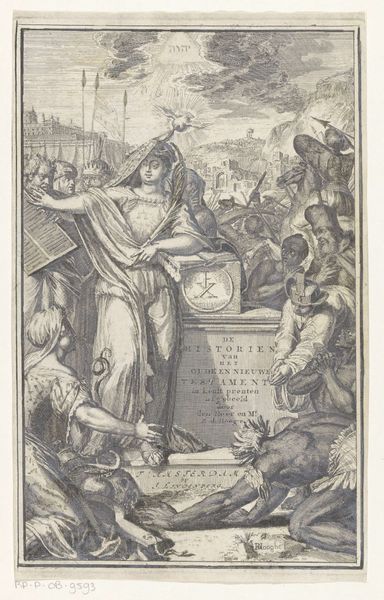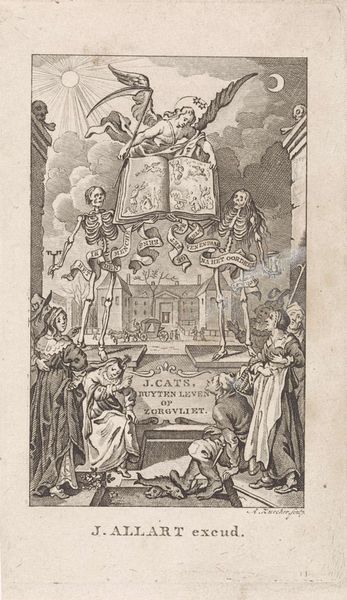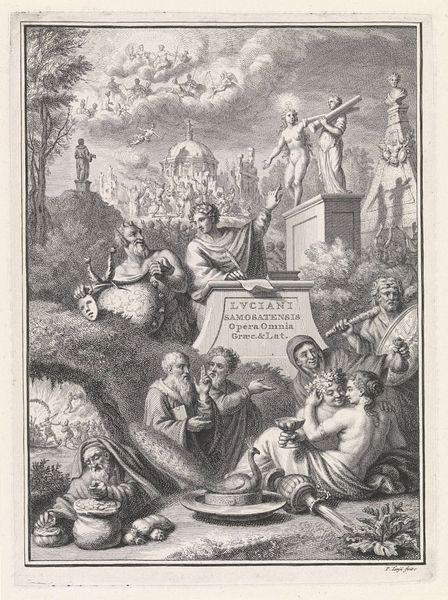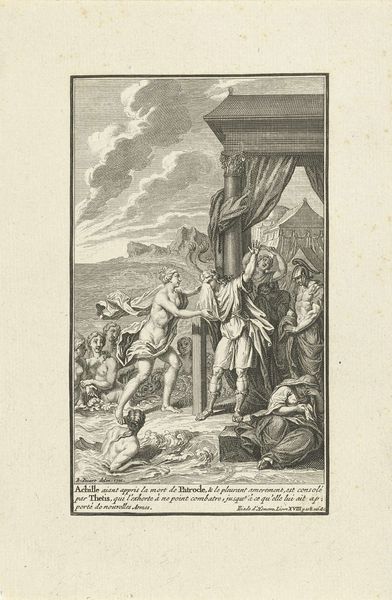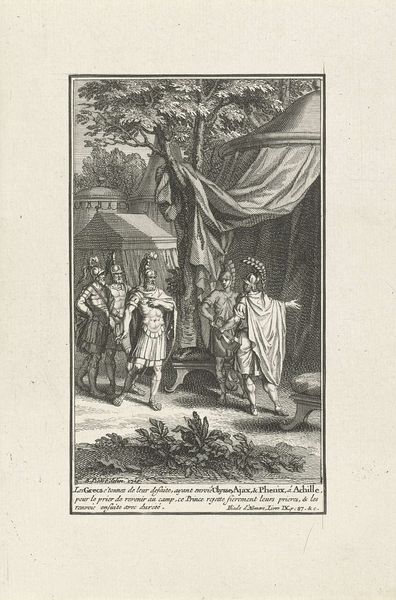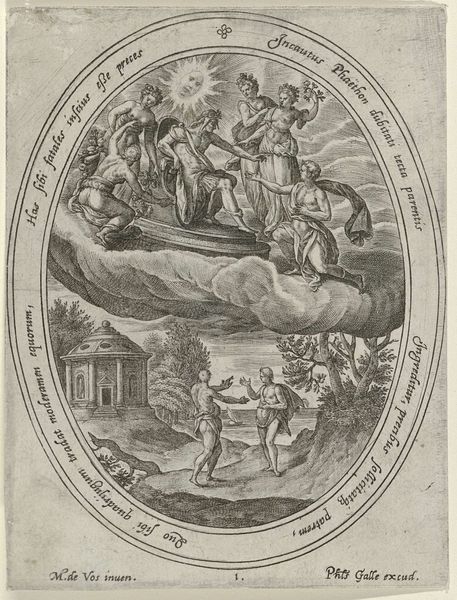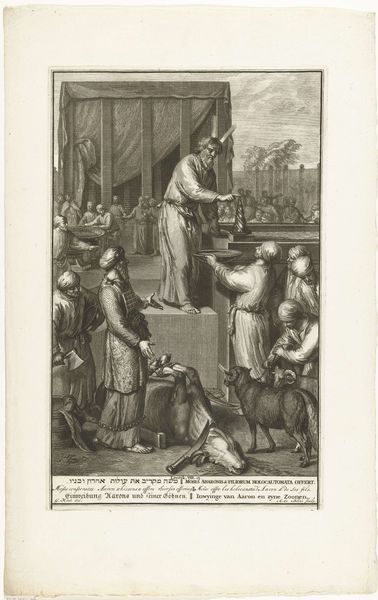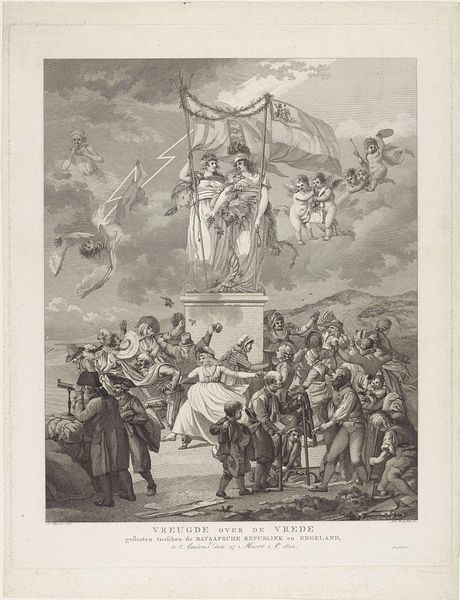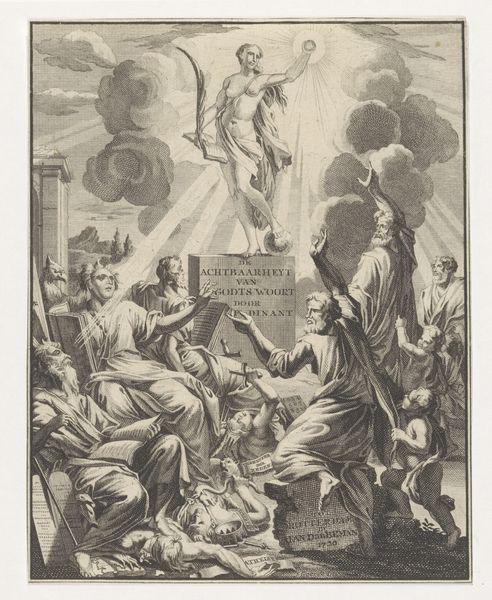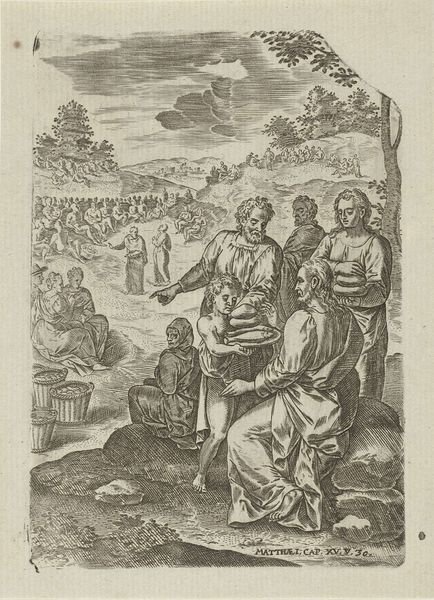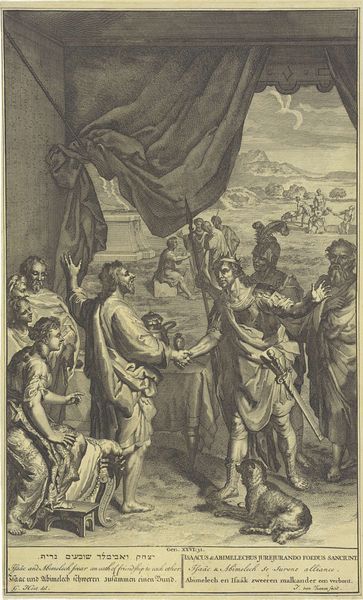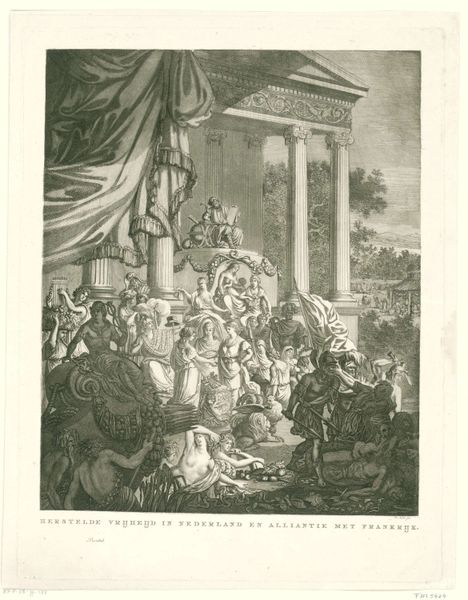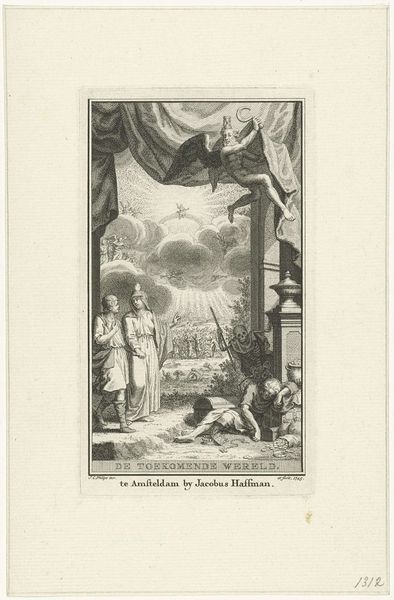
Dimensions: height 164 mm, width 126 mm
Copyright: Rijks Museum: Open Domain
Editor: So, this engraving is called "Gehelmde vrouw op een troon en Germanen" or "Helmeted Woman on a Throne and Germans," made by Carel Jacob de Huyser in 1787. It looks like it's some sort of allegorical scene. I'm struck by the composition – it feels very staged, almost like a theatre production. What story do you think it's trying to tell? Curator: It's fascinating how you perceive that theatrical staging, it points to the period's preoccupation with public performance and constructing historical narratives. This engraving speaks volumes about how Dutch identity was being shaped and presented in the late 18th century. Do you notice the woman on the throne? Editor: Yes, she's wearing a helmet and looks quite imposing. She is Minerva, isn't she? Curator: Precisely. Consider Minerva as more than just a figure. Think about what her presence signifies within the context of the artwork and what socio-political statement De Huyser might be making through her. Editor: Maybe she represents wisdom or military strength, which the Dutch were known for, protecting "Germans." It also gives more value to this scene in terms of a powerful society defending the helpless people around it? Curator: Yes, absolutely, or she can represent some of the ideas of the Batavian Republic, and, maybe more interestingly, it is through such idealized representations that power is both asserted and negotiated. What about the placement of text? The "Te Amsterdam Bij M. Schalekamp" feels very direct and… almost disruptive, doesn't it? Editor: Yes! That gives a hint as to the intention of the author, pointing directly to the distribution venue and trying to communicate its ideas in public. That definitely changed how I understand this work. Curator: Indeed. Analyzing how and where art is distributed and consumed helps us understand its public role and the political work that imagery performs. I leave this now with you, how does it change what it can be today? Editor: I didn’t know to observe those subtle, powerful relationships! Thanks for pointing out that it gives so much more to understanding artwork in its real and imagined sociopolitical setting.
Comments
No comments
Be the first to comment and join the conversation on the ultimate creative platform.
